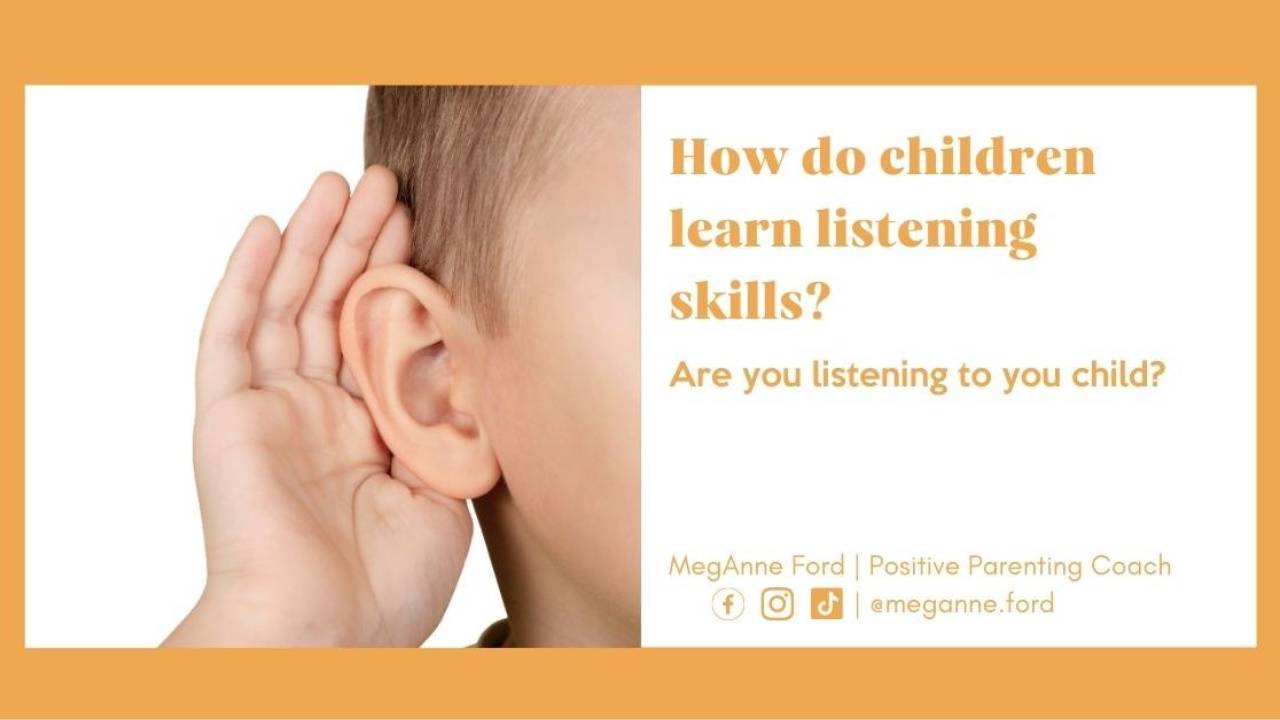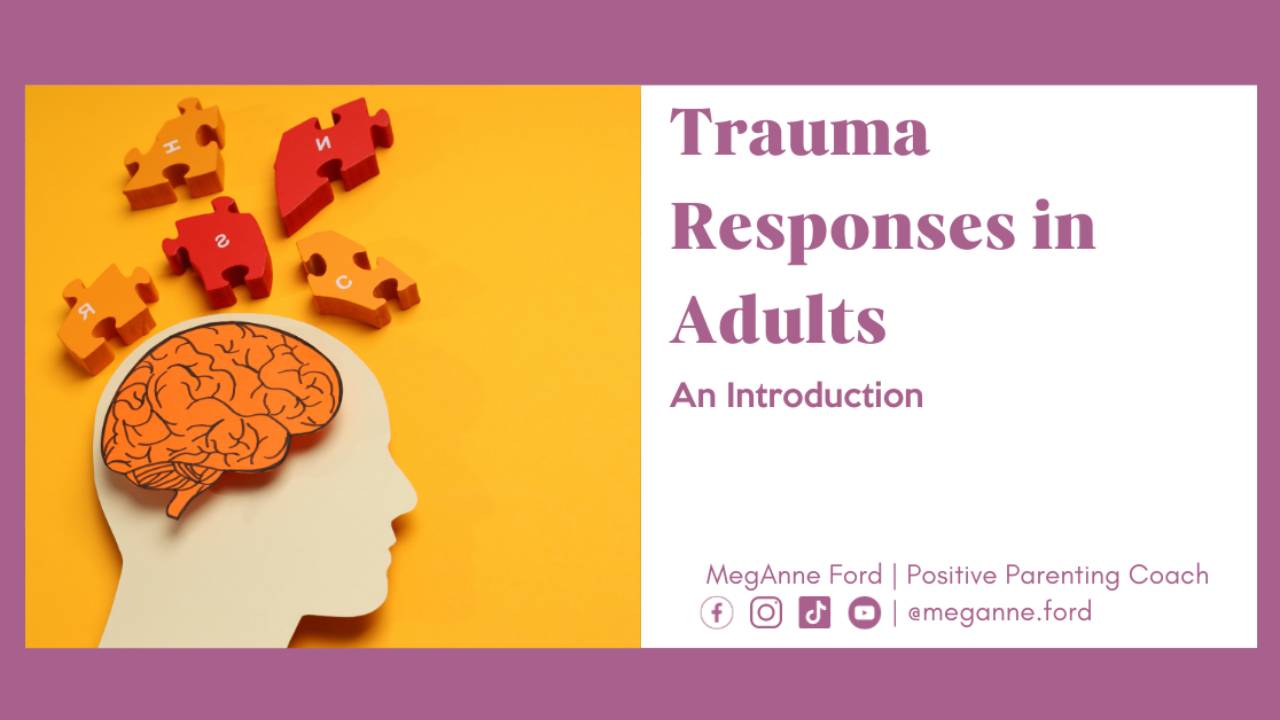
Knowing about Trauma response in adults helps parents.
Sep 21, 2023
You can WATCH or LISTEN to this content
I invite you to take care of yourself while you read. This content can be triggering, so take a break if needed. This information is for awareness and entertainment and not to be a substitute for professional mental help.
I am a parenting coach. I work with parents to help them build and maintain parenting tools that work inside their home.
The more we know as adults, the more empowered we can be in the stressful situation that comes up with the little ones in our care.
Takeaways
Understanding our brain's natural survival mechanisms, like making assumptions about potential threats, can empower us to navigate stressful situations effectively.
Trauma responses, including flight, fight, freeze, and fawn, are our brain's adaptive defense mechanisms, but it's crucial to recognize when they become maladaptive and seek healthy coping strategies.
Healing from trauma can lead to positive transformations, including reevaluating values, deepening relationships, and breaking the cycle of passing trauma to the next generation.
Becoming aware of our stress signs and safety habits can help us develop healthier responses to stress and support our children in navigating their stresses without resorting to fear-based punishments.
Our bodies are designed to survive!
Our brain’s main focus is to adjunct our bodies to navigate circumstances. If the circumstance becomes dangerous, we become protective so we can survive.
That is when our brain can make assumptions about our environment. Is the animal that is in front of us a tiger or a cat?
When we make the correct assumptions, when we are out in the wild, and it truly is a tiger, our survival kicks in. We take a protective stance, and that is an adaptive strategy. We want to stay alive when the tiger is near.
But what happens when the tiger is a house cat, and our body still kicks into survival? Then, the process of the protective stance becomes maladaptive.
We all make assumptions; we do this to keep us safe, but if we leave those assumptions unchecked, we could be in a survival stance when we do not need to.
Our brain is scanning for threats. It is keeping us alive, unconsciously scanning every fifth of a second, so in every second, it scans for safety five times.
So, every minute, our bodies scan for safety 300 times. The “reptilian” brain does this unconsciously. We are not aware that this is happening. That is a lot of energy being expelled.
What happens when our body is moving through trauma?
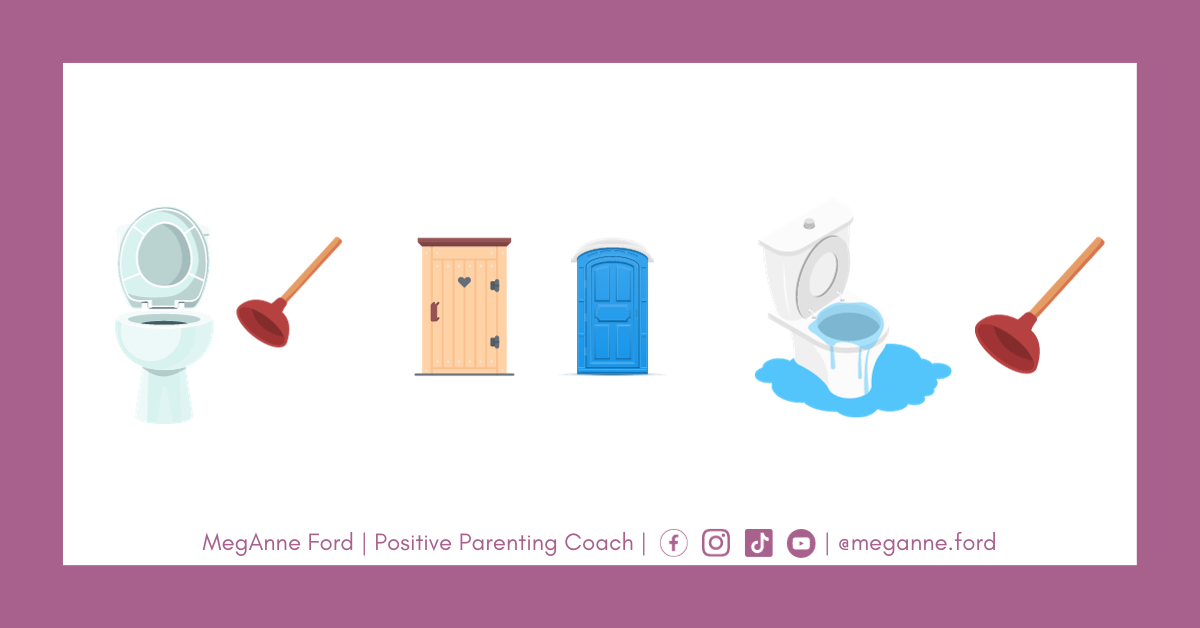
We will think of an overflowing toilet to use as a visual example of what is happening in our brains and bodies when we experience trauma.
When a toilet overflows, it is over capacity. The trauma could be structural, flooding, or getting into the floorboards. Our response to the trauma when the flooding overcomes the tools that we have available to help stop the flooding that becomes the trauma response.
This also happens to our bodies; we become overflooded, and our coping strategies and tools are not enough. That's when the traumatic experience or event can last, and we go into protection mode.
Back to our toilet, what can we do? What tools or strategies could we use to mitigate the overflowing toilet?
Turn the water off. Now, the toilet is not functional, but if we are trying to protect the floors from getting wet, that might feel like it is the only way.
So we decide the toilet is dangerous, and we choose to go outside and use an outhouse instead of the toilet that may overflow or will overflow if we turn the water back on.
We swung the other way to solve the problem of the floors getting wet. We avoid the problem, and there is no need for any tools to fix the problem.
Sometimes, it is helpful to go in the opposite direction and ignore the problem entirely, but it is usually not a practical solution.
“It is not the thing. It is how you use the thing.”
What stories and beliefs are we telling ourselves about the situations in our lives that cause us stress? Where are we turning the water off and ignoring the problem altogether?
Are we even aware of the stories that shape and guide our relationships, actions, and tools that we hold to navigate them?
Are we aware of our metaphorical outhouses?
Are we aware of where that is either helping us or limiting us?
All of it makes sense when we truly understand and know that our brain is designed to protect us and keep us safe. Then, we can become aware of our negative biases.
What is negativity bias?
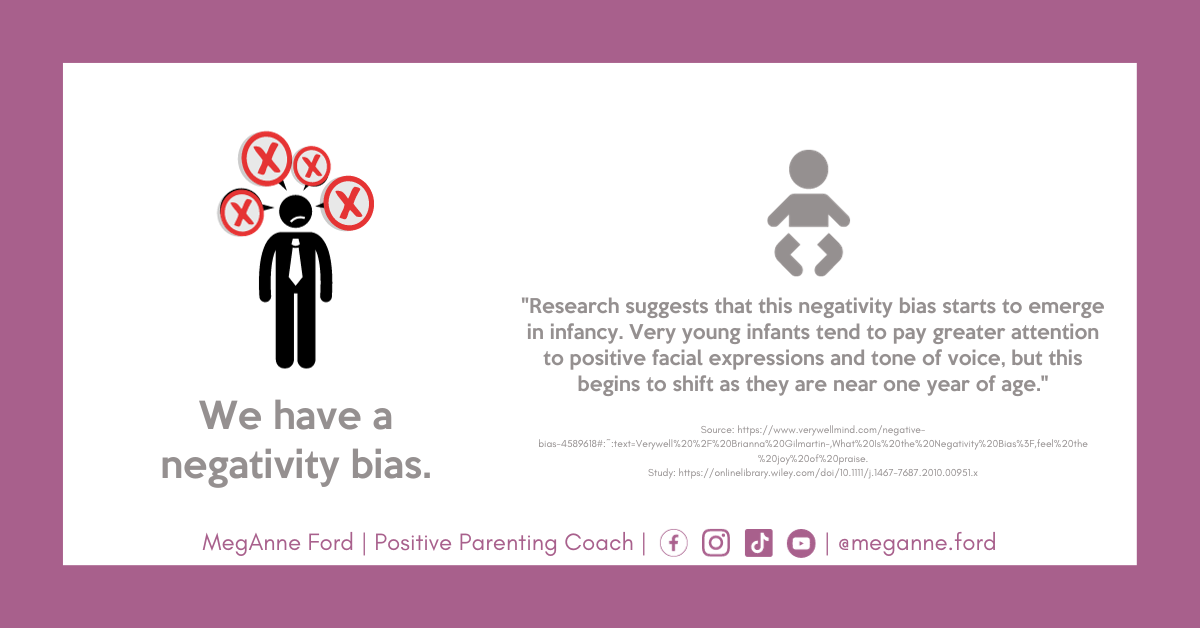
Negativity bias means that we are primed for survival. We are primed to ensure those dangers are avoided because if we can avoid dangers, then we can stay alive.
A study about negativity bias blew my mind.
The research suggests that this negativity bias starts to emerge in infancy specifically at three months old. Young infants tend to pay greater attention to positive facial expressions and tone of voice and start to begin this shift as they near one year of age.
Infants are in tune with the environment, which is incredible when you think about how we undervalue those years in society. Yet, children without verbal skills can soak in everything in those years. That is powerful!
We learn in this blog how non-verbal communication speaks louder. We can start to become attuned to our non-verbals and tools, becoming aware of these spaces.
We can start noticing how our negativity bias impacts our relationships, how we problem-solve, and our perceptions.
So now we can start to visualize that we are perfectly designed to survive. Our brains scan for safety and filter that information through our negativity bias. When you think about it, that requires a lot of energy, which is happening subconsciously.
I had no idea all of that was happening in the background. I was clueless until I started bringing awareness to those spaces.
If you are interested in continuing to bring awareness into those parts of yourself in a safe environment, subscribe to the Be Kind Coaching mailing list.
Triangle of Traumatic Stress

I was introduced to the triangle of traumatic stress, and I felt so seen. These can be pictured as the metaphorical “outhouses.” We can become so far removed from the problems. We become overwhelmed.
- Views about the world
- "The world is a dangerous place."
- "People cannot be trusted."
- "Life is unpredictable."
- Views about the future
- "Things will never be the same."
- "What's the point?"
- "It is hopeless."
- Views about self
- "I am incompetent."
- "I should've reacted differently."
- "It is too much. forme to handle."
- "I am damaged goods."
Source: https://www.ncbi.nlm.nih.gov/books/NBK207191/
Each of these thoughts keeps you safe, keeps you protected but also keeps you limited.
It may keep the toilet from overflooding, but it also may limit yourself by inhibiting spaces of how you show up in the world.
These thoughts of undervaluing ourselves can keep us small, and maybe safe, and even invisible.
When we give ourselves an “outhouse” or a thought, "what is the point?" Trying is useless, and then we can separate and ignore the problem.
What is my role as a parent coach in this?
I'm not going to try and change you or those thoughts. I will support you in knowing your value, building trust, staying present, and helping you value these things.
So you become confident to open up. I'm going to start doing my P.A.R.T. I will stay present, attuned, resonating, and building trust. Trust equals safety.
We practice where we feel safe. When we feel safe, we can practice new communication tools and positive parenting. Then, we can take those tools into situations that feel unsafe.
A client of mine was sharing how she is not afraid anymore when her values are being challenged because she is working to become grounded in her values and feels solid in those values.
Realigning your actions to your own values is powerful and grounding.
When we choose to define our values, we can ground ourselves, lower our defenses, and work with our brain as it perceives threats. When we are at work, we can actively slow down and take the time to distinguish and discern between a real threat, ‘the tiger’ or not ‘the house cat.’
When stress causes our trauma response to activate
When we are in the presence of a threat and eye to eye with a ‘tiger,’ our defenses get activated.
These defenses can be an adaptive response. We want these defenses to activate to stay alive. We also need to be curious when those responses become maladaptive or unhelpful.
The 4 trauma responses
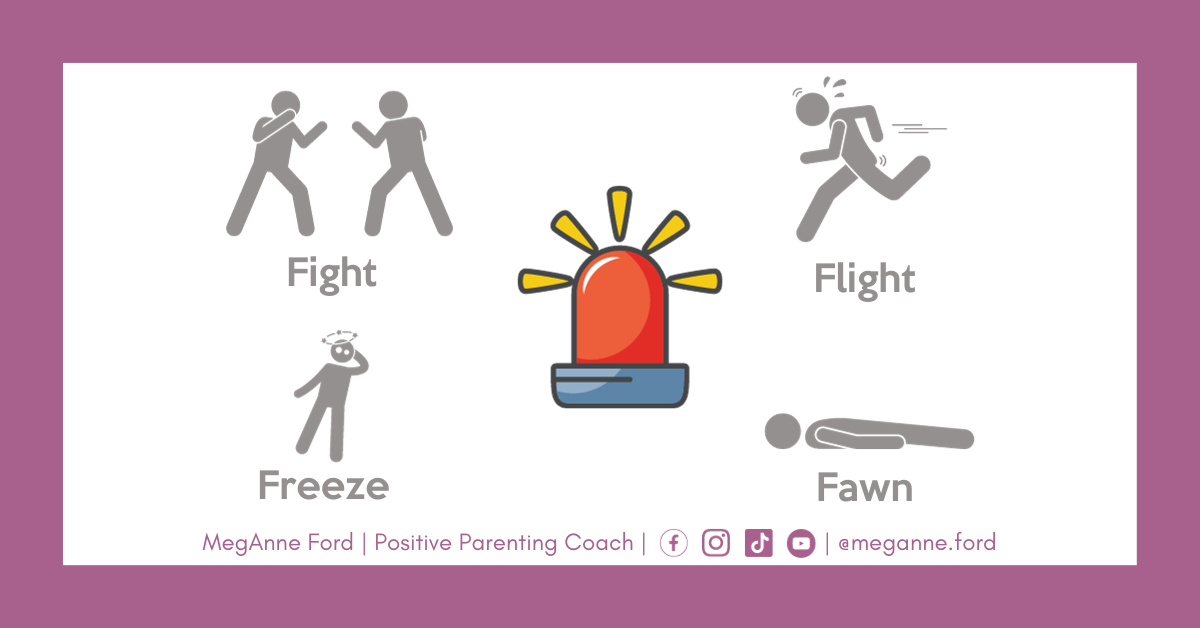
There are four trauma responses that I will cover in the following blog posts.
- Flight
- Fight
- Freeze
- Fawn
Questions that will be answered are:
- What do the responses look like?
- how can we soothe those responses?
We can find healthy ways to cope with these responses and heal from trauma. We can start hearing those alarms and listen and then soothe the alarms.
Trauma can often lead to people automatically reevaluating their values and redefining what is truly important to them.
Trauma can increase bonding with family and community and redefine or increase a sense of purpose and meaning. Increase commitment to personal mission, revise priorities, increase charitable giving, and volunteering.
When we as humans go through a traumatic experience and have healed, we often want to build trust, which is a big contrast to the triangle of traumatic stress.
When we seek to heal our trauma, we can start to heal the views of the world, ourselves, and the future.
That healing can then encourage us to expand and deepen relationships with the people around us, but most importantly, ourselves.
This work is important to me. I was raised with punishments. They inflicted pain and fear and triggered trauma responses.
The physical pain of corporal punishments and the emotional pain of humiliation of those punishment initiates defenses to help us survive. Fear-based punishments elicit defenses, and it is counterproductive to raising children.
The root of everything I do is navigating stress without fear-based punishments. It is to hold our own stresses, so we have the bandwidth to hold the child’s stress and help them navigate and practice the tools.
Myself and my clients are breaking the trauma cycle. We are not passing our trauma to the children around us. We are actively healing from our pains.
We are welcoming awareness of the defenses we hold.
Is your child activating your defenses?
If they are, what is that Illuminating? Where can we grow? Where can we start to delineate the cat and tiger?
Things to ask yourself:
- When do you notice your signs of stress?
- are you familiar with them? Have you ever been in a space to explore them?
- When do you notice signs of safety?
- What habits support your sense of safety?
- What habits support your sense of stress?
Those questions are hard to answer because once we become truly aware of those answers, we can’t un-know them.
Going for walks and being outside eases my stress, but I also know that I am more prone to scrolling on social media.
I know very clearly which habit leaves me in a better state. When I slow down to take time to Attune to myself, the truth speaks very loudly.
But I also take comfort in knowing I am safe in rest.






